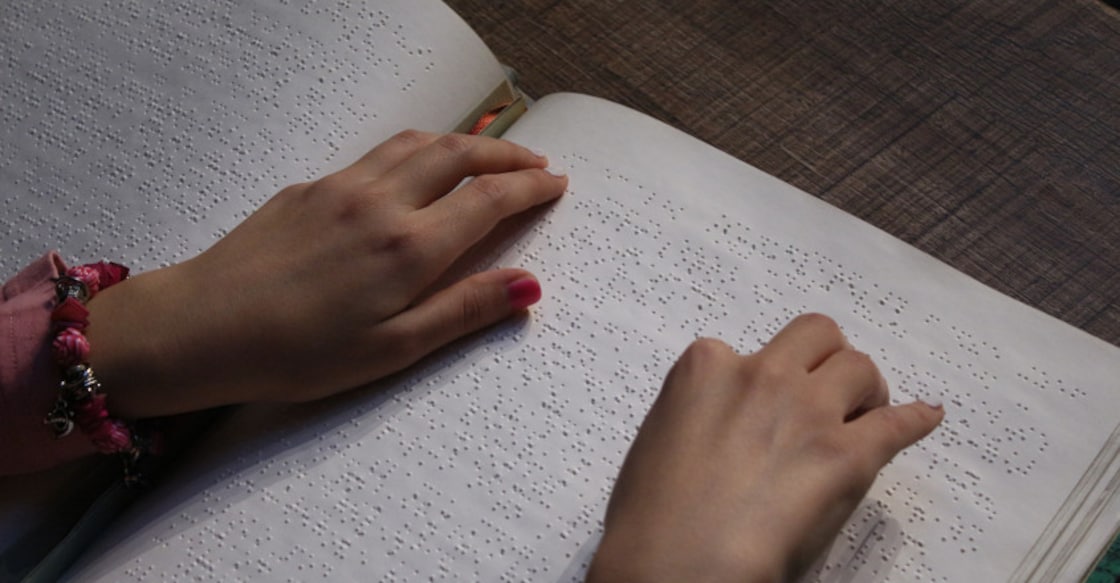10 commonly held misconceptions about braille

Mail This Article
Most people have at least heard about braille, the tactile script that people with visual impairments typically use to read and write. However, beyond the fact that Louis Braille invented it two centuries ago, nobody really knows what it actually is. This has spawned a lot of misconceptions in the minds of able-bodied people. Some of them, in fact, tend to be downright hilarious to experienced braille users. Now is the right time for you to have your misconceptions cleared up, and for me to do the clearing up, since January is the month in which Louis Braille was born. In fact, January 4h, Louis Braille’s birthday, is celebrated world over as World Braille Day. Without further ado, here are some facts about braille to clear up those myths and misconceptions:
1. Braille is not a language but a script. Braille itself is not a language. It is a code by which all languages may be written and read by the visually impaired (or anyone else who wants to, for that matter). It is a script used to read and write languages. Think of it as another way of reading and writing all languages you can possibly name. There are braille versions of Chinese, Spanish, Arabic, Hebrew and many other languages. And yes, this includes all Indian languages such as Hindi, Malayalam, Kannada, etc. So know, I’m not writing in “braille language” but in English.
2. Braille is not raised letters on paper. Braille is a system of dots in which different dot combinations form different letters, symbols, punctuation, etc. It does not look like written letters embossed on paper. That means A in braille does not look anything like the A in print. There is a system in which letters are embossed, just as they look in print, onto paper. It is called Moon print, and is very different from braille. This was the system used by people who are visually impaired before the invention of braille. Subsequently, the braille system was adopted since it was much easier to use, and less cumbersome to store.

3. The word is pronounced “braille” and not “Brailie”. The ‘e’ at the end of the word is silent. This one cracks me up every time.
4. Braille does not work in such a way that 1 dot stands for A, 2 dots for B, 3 dots for C and so on. That would mean 26 dots for Z! (I’m not kidding, people have actually asked me that). It has a combination of different dots used to create dot pattern. The positioning of the dots, not their number, determine the letter. So the braille code works like this: Braille symbols are formed within units of space known as braille cells. A full braille cell consists of six raised dots arranged in two parallel vertical columns of three dots (like the number 6 on a dice). The dot positions are identified by numbers one through to six. Sixty-three combinations are possible using one or more of these six dots. Cells can be used to represent a letter of the alphabet, number, punctuation, part of a word or even a whole word.
5. Braille is not difficult to learn. It’s not that hard, honestly. Take it from someone who has learnt braille. “But how do you remember all those dots… It looks so complicated…” You draw swiggly little lines and shapes on paper, and remember exactly which shapes form which letters? Put that way, print sounds complicated too.

6. Braille can be used to write numbers too. Just because you’re blind doesn’t mean you don’t have to learn math. There’s a special version of braille just for mathematics called the Nemeth Code. It was invented by Dr. Abraham Nemeth and can be used to transcribe math, algebra and calculus. In fact, there is a whole braille geometry box, with a protractor, compass, a long ruler, etc. Sadly, the Indian educational system does provide exception to students who are visually impaired for dropping Math. However, all tools for learning math does exist. If proper study material were provided, a child with visual impairments could learn math as well as her sighted peers.
7. Braille is used by people with visual impairments for more than just taking notes, studying, etc. It is used by many people with visual impairments, just like print, for labeling, writing to do lists, recreational reading, etc. There are even braille magazines in India. India’s first lifestyle magazine in braille is called White Print, and is a monthly periodical full of news stories, travelogues, short stories, quizzes, and even advertisements.
8. This system of writing, although modified by Louis Braille for the use of people who are visually impaired, was not initially conceived as a system for the visually impaired community. Can you believe it? Braille started out as a military code called “night writing.” It was developed in 1819 by the French army so soldiers could communicate at night without speaking or using candles. Louis Braille learnt about this code at the age of 15, when an army professional visited his school. He eventually modified that system and developed the more usable, streamlined version of the braille alphabet we know today.

9. Braille readers are capable of reading fast. Repeat after me: braille readers are capable of reading fast. In fact, some braille reader’s fingers can really fly. While the typical sighted person can read 300 words per minute, some fast braille readers can whip through a book at a speed of 400 words per minute, according the Perkins School for the Blind. The secret to reading braille so quickly is a light touch – and using both hands (one hand reads while the other is poised to start on the next line). Isn’t it ironic that print readers think braille is slow?
10. Braille is not becoming obsolete with the advent of computers any more than print is. There is something called digital braille as well. Devices called braille displays act as braille laptops, enabling a braille user to read, write, check their mail, surf the web and much more – all on a braille screen. These devices were extremely expensive and hard to come by in India, but as of a couple of years ago, braille displays have become much more affordable, and are now available for the cost of an average laptop.
Bonus fun fact: Did you know? There is even an asteroid named Braille. In 1999, NASA’s Deep Space 1 probe flew past an asteroid while on its way to photograph the Borrelly comet. NASA named the asteroid “9969 Braille” in honor of Louis Braille. Cool, huh?


